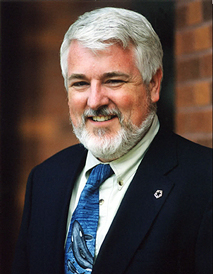Research
Dr. Harley R. Myler, P.E.
Professor

My current research is concentrated on Machine Consciousness. This is a specific area of Machine Intelligence, which is related to Artificial Intelligence, but with greater concentration on robotic embodiments.
The SeaDog Project
The SeaDog project involves the development of a marine robot directed towards the remediation of the invasive lionfish (Pterois volitans/miles). It is also an environmental monitoring robot as it is capable of benthic surveys to 100m. It is supported in part by the AARISE program.
The Autonomous Aquatic Robot for Invasive Species Evaluation (AARISE) project is funded by the LU Center for Advances in Water and Air Quality (CAWAQ) which promotes understanding of critical environmental issues and develops solutions for mitigating challenges in water and air quality faced by industries and global community through research, educational programs, and community outreach.
At present, we are working with the OpenROV 2.8 unit and have Trident ROVs on order.
We are also developing a custom robot to address the problem.
War of the Worlds Robot
We are developing a walking robot based on the Lynxmotion Mini-Hexapod platform that seeks out invasive fire ants (Solenopsis invicta) and dispatches them with a blue laser. This robot will be driven by an Nvidia Jetson embedded processing system that will access a gimbal-mounted camera to locate fire ants and also aim the laser. The robot is currently being developed as an undergraduate research activity.
Plume Monitoring Swarm
Plume Monitoring Robotic Swarm: Plumebots
The Plume Monitoring Swarm project involves an area of robotics where swarms of small robots cooperate to achieve a common task. In this instance, we are interested in measuring the extent of chemical plumes in bodies of water. These plumes can be as simple as freshwater plumes in saltwater bodies, or the reverse. We are also interested in the plumes created by chemical effluents where the type of plumes measurable is limited only by the availability of sensor technology. Our existing prototypes are able to measure salinity, pH, temperature, TDS and conductivity. Current environmental monitoring science has developed various software models for the simulation of aqueous plumes, but to date accurate, 3D sensing of plume structure in situ has not been accomplished.
This project presents a robotic swarm consisting of multiple copies of a robot that we have named the Plumebot. The swarm is released at the origin of the plume and the robots spread out and collect data on the extent and structure of the plume in the water. The Plumebots are in communication with each other and are capable of maintaining their distance in order to develop an accurate and dynamic map of the plume shape. When the swarm has completed their survey, they regroup downstream for collection and data dump and analysis.